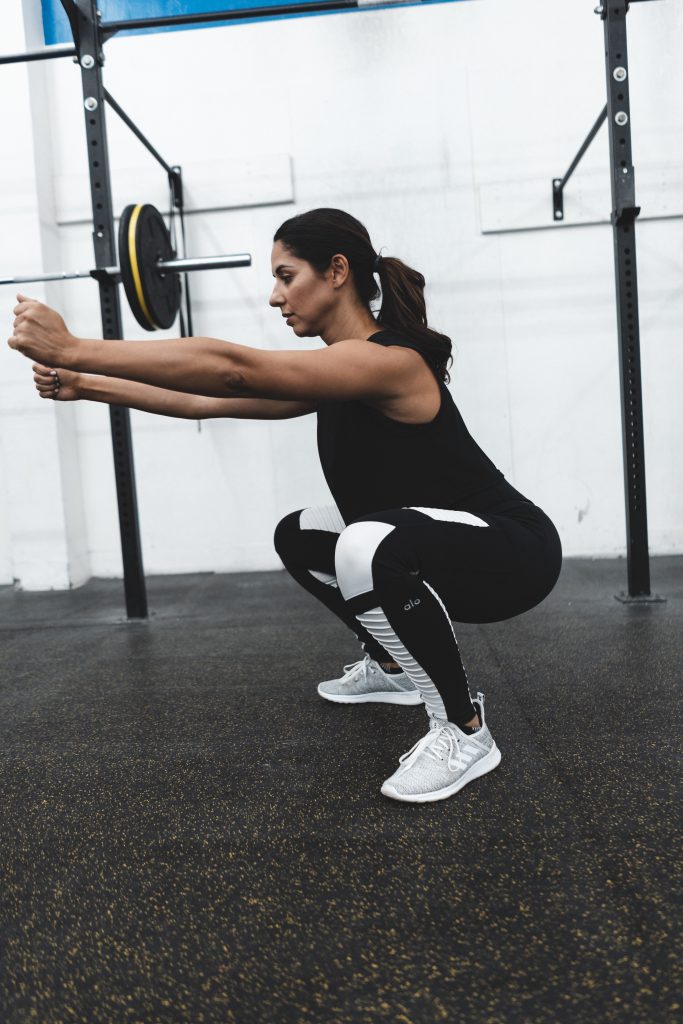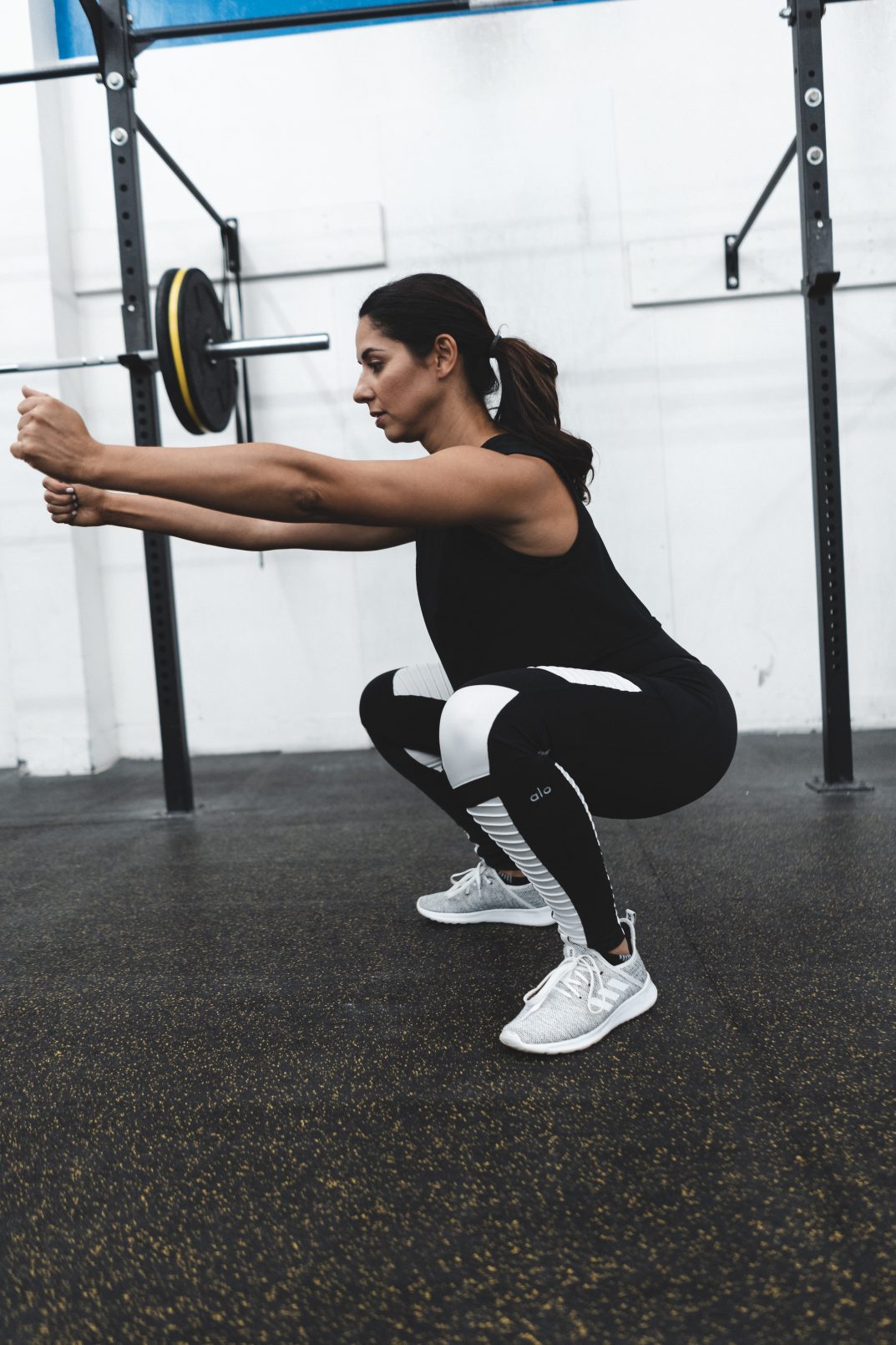I’ll be the first to admit that I am not a fan of home workouts. Like many of you, I prefer to be in a gym, amidst the muscles, loud music, sweat, and unlimited equipment. That is my happy place.
The pandemic forced all of us outside of our comfort zones, myself included. I’m a big believer in turning lemons into lemonade, working with the resources you’ve got and making 1% improvements no matter what the circumstances, so at-home workouts it is!
When you’re used to lifting heavy with barbells and a variety of equipment like I was, it’s very difficult to suddenly have to McGavyer your workout with the three bands, scotch tape, and one dumbbell you may have available. Most people started doing high intensity workouts every day thinking that the more jumping and sweating they did, the more effective the workout.
But that’s where we get it wrong. Intensity doesn’t require jumping around and bouncing off walls. There’s a time and place for that in any training program. More on that here.
Training at home doesn’t have to be a drag. Here are three unique ways to increase the intensity of your at-home workouts to make them challenging, progressive, and effective.
Tempo Changes
In strength training, tempo refers to the speed in which you do a movement or lift. It’s one of my favorite variables to use inside of my online coaching program, BarbellSTRONG.
I’ve written a beginner’s guide to Tempo Training here.
There are multiple ways to play around with the tempo of an exercise. Let’s use the push-up as an example:
- An eccentric Push-up would have you slow down the ‘negative’ phase of the push-up, or the lowering phase. Use a tempo of 3-4 seconds.
- A concentric push-up would do the opposite of the above. Perform the push-up as normal – chest to the floor – and then slowly come back up for a 3-4 second count.
- You can also add in pauses half-way or at the bottom phase of the push-up to make the movement more sinister.
Tempo training can be applied to just about any exercise but avoid using them for the entire workout. It’s best to pick 1-2 exercises and play around with tempo there.
A few reasons to apply tempo work to an exercise:
- To improve your technique or position during a difficult phase of a lift or exercise.
- For a compound exercise like a sumo deadlift where you have a very light weight.
- Improved muscle definition and strength
You can read more benefits to tempo training here.

Work Rest Ratios
Changing your work/rest variables is another way to apply intensity to a workout without having to add weights. This makes it an ideal variable for those bodyweight workouts you do at home.
Here are some ways to play around with work: rest variables.
Set work time: descending rest time
- First set: Work hard for 45 seconds: Rest for 45 seconds
- Second set: Work hard for 45 seconds: Rest for 30 seconds
- Third set: Work hard for 45 seconds: Rest for 20 seconds
- Fourth set: Work hard for 45 seconds: Rest for 10 seconds
Descending work time: Set work time
- First set: Work hard for 60 seconds: Rest for 20 seconds
- Second set: Work hard for 45 seconds: Rest for 20 seconds
- Third set: Work hard for 30 seconds: Rest for 20 seconds
- Fourth set: Work hard for 30 seconds: Rest for 20 seconds
Tabata style – Eight rounds of 20 second ‘on’ and 10 seconds ‘off’. This is brutal.
If you happen to have a few weights to play with, you can shorten your rest periods to 30-45 seconds between sets as well to keep the intensity up. There are lots of ways to manipulate the variables, so have some fun with it.
Get Creative with Home Items
By far the most challenging and fun aspect of training at home is coming up with creative ways to use household items as equipment, an no, I don’t mean using cans of soups as weights.
Can we please stop pretending like cans of soup are going to have any kind of training effect? Ugh.
Here are ways I’ve used at-home items to intensify a workout:
- Filled a backpack with heavy books and used that as a weight
- Elevated my heels on a thick book for goblet squats
- Used books or a chair for step-ups or deficit exercises
- Used a dish towel as sliders for mountain climbers, lunges, or Pilates
- One time I used a wine bottle to overhead press, simply because the only weight I had was too heavy. You work with what you’ve got!
The reality is you can get creative with some exercises at home as long as you do it safely and manage your expectations. Don’t try to replicate a heavy back squat with a broomstick and some laundry detergent. It’s just not going to work.
Increase the Repetitions
Alright this one seems obvious but I bring it up because it’s very effective when used correctly.
Your glutes can handle a lot of volume so in the absence of any weights, performing glute exercises (hip thrust, glute bridges, abductions, frog pumps, reverse lunges, etc.) for reps of 30+ can have a great training effect and help build the shape of your glutes.
Similarly, an exercise like a deadlift of goblet squat can be done for 20-25 reps assuming you have great form and the weight you’re using is just too light.
Compare that to an exercise like the pull-up which requires a lot of scapular control, lumbo-pelvic stability, and upper body strength. Doing 30+ pull-ups doesn’t make much sense if it means your form will start to break down and you put up unnecessary stress on the shoulder joints.
Knowing when to apply the increased repetitions is just as important as the workout itself itself.

Perform 1-1/12 Reps
Finally, there is the very sinister 1-1.5 rep method that can intensify your at-home workout in ways you didn’t think it was possible!
This is by far my least favorite variable but only because it’s very hard (I’d rather do burpees on a bed of broken glass, to be honest). It’s nothing new, but I know a lot of coaches who swear by them.
Coach Tony Gentilcore explains it simply: “Basically you take an exercise and “extend” the set by incorporating a “1/2 rep” in between full-ROM reps.”
It’s a unique form of tempo training but deserves its own category, in my opinion. Coach Ben Bruno has used the 1-½ rep method for years. Here’s one of him doing 1.15 reps of an inverted row.
This method is a clever way to intensify your workouts at home and build some serious muscle!
At-home workouts may not be the most convenient or preferred method to train, but keep your chin up. It’s temporary and it’s always good to know these little ‘tricks’ should you ever need them.
Try them out and tell me what you think!

